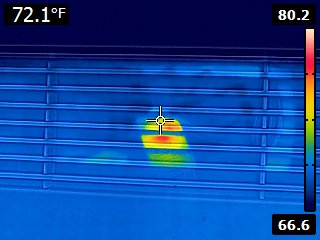
Ecuadorian President Lenin Moreno
Headline: “President accuses predecessor of electronic surveillance” sound familiar? No, it’s not New York or Washington, this time it’s Ecuador. Let’s take a moment to read between the lines.
A camera was discovered on September 14 in the office of Ecuadorian President Lenin Moreno when staff noticed a warm spot on the wall. Moreno later claimed that former President Correa was able to spy on him from Correa’s cell phone.
Moreno addressed Correa on a weekly television broadcast, “Did you give the order to have that camera installed?” He asked. “What did you use it for? Why was I was not informed of its existence? Why was it still functioning? Is that is not espionage? Is that not treason?”
“Shocked and furious,” Moreno wrote in a message on Twitter denouncing the discovery of the device, which he said violated his privacy.

“I’m shocked! Shocked, I tell you! To find that surveillance is going on here!”
As with most news headlines, there may be some details left out, some lessons to learn, and other concerns that may be inferred.
From Gonzalo Solano, Associated Press:
Moreno said the existence of the camera was even more perplexing because every morning at 8 a.m. his security detail— which was never informed about the device — checks his office for bugs, meaning the device would’ve been activated remotely only after the daily scan was performed.
He said the camera was discovered by chance when someone in his office noticed that the wall in which it was hidden was heating up.
We often hear clients or even other security professionals refer to an electronic countermeasures sweep as a “scan”. In many situations, they seem to expect that a sweep is nothing more than just “scanning” the airwaves for radio signals. In the old days, a police style radio scanner from Radio Shack might actually have been able to detect a few transmitters. Today, though, that is far from the truth.
Modern bugging devices can be completely overlooked by simple radio receivers and scanners. A number of units sold online today as “bug detectors” are not at all effective for detecting even simple listening devices.
Another concern is that electronic surveillance does not need to be done by radio waves at all. A spying device could be sending its information over an internet connection, recording information for later retrieval, transmitting by infra-red and even visible light, or many other methods.
A professional sweep team will be familiar with all modern eavesdropping and surveillance threats. They will also include thermal imaging as one of their important inspection tools especially for camera detection. If Moreno’s office had been inspected by a qualified TSCM team, a heated spot from a camera behind a wall would have stood out as if it was on fire.

Thermal Imaging detection
Apparently, according to the previous president, the camera was part of a security system installed back in 2009, and supposedly disconnected in 2010. Even a marginally good sweep team should have found it sometime between then and now.
Some reports explained that the camera was a wired camera “and therefore was not remotely operated”. Well, there again they are making a very wrong assumption. Wired security cameras, even if they are not network based themselves, are most likely connected to a DVR or NVR recording device. The recording unit will almost always have an internet connection and could be remotely monitored (with the right login credentials).
Could the president be overly paranoid? Well, yes, but as the saying goes, “just because you’re paranoid it doesn’t mean someone’s not out to get you.”
Millions of dollars of surveillance devices are sold every year. Protecting businesses and offices from such unauthorized surveillance needs to be done by a professional TSCM provider. Contact Exec Security TSCM if you have questions or concerns about securing your executive offices, conference rooms, or any confidential areas.
Read more at:
Chicago Tribune
Bloomberg
PanAmPost
